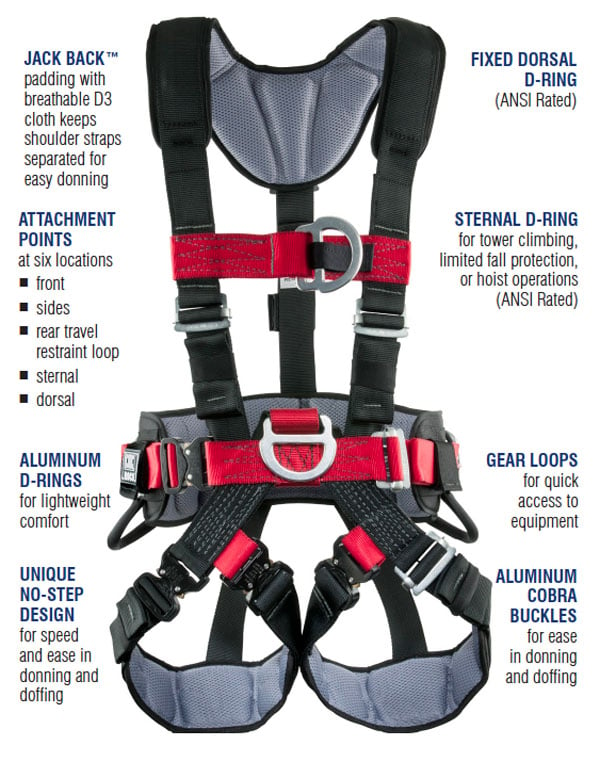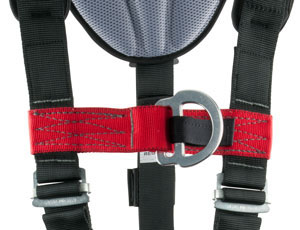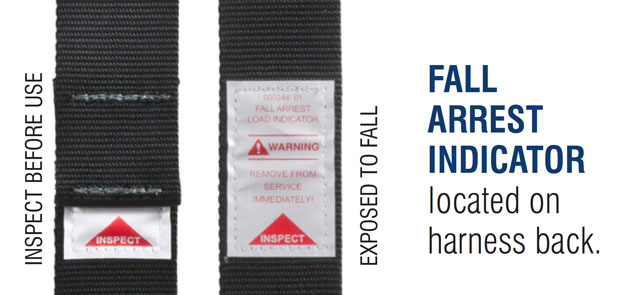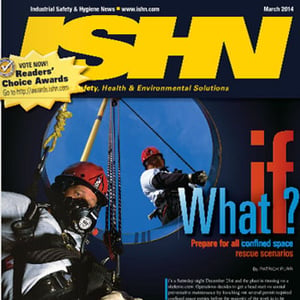Imagine donning a Class III harness in as little as 8 seconds!
That’s just one of the many features of the new CMC/Roco Work-Rescue Harness.
 Because of its innovative “no-step” donning, comfort fit and lightweight design, this new harness will appeal to rescuers, rope access technicians, tower climbers, and other professionals working in the vertical environment.
Because of its innovative “no-step” donning, comfort fit and lightweight design, this new harness will appeal to rescuers, rope access technicians, tower climbers, and other professionals working in the vertical environment.
Our design team (aka Roco instructors) joined up with CMC’s engineering and fabrication team to create this new Class III harness with a “no-step-through” design. The harness literally wraps around your body as you don it. After the initial webbing adjustment, it is then fitted to the user with no need to re-adjust the various straps when you re-don the harness. This unique feature allows a user to don the harness and be ready to go in as little as 8 seconds. Compare this to donning a standard Class III where the user has to step through the waist and leg loops, then tighten the buckles and stow the straps. Not to mention when a “dreaded half twist” is discovered in one of the straps requiring the wearer to start all over again.
The CMC/Roco Work-Rescue Harness features comfortable wear especially while suspended. The lightweight proprietary CMC alloy D-Rings reduce the overall weight of the harness, while the addition of a rated attachment point at the back of the waist belt allows for a convenient connection to a fall restraint lanyard.
The harness has many advantages for work-at-height professionals. For rope access technicians, the top of the A-Frame lift is designed to accept a variety of connectors for anchoring chest ascenders. It also includes a closed loop on the chest H-Frame to mount a chest ascender adjustable tow strap.
 Tower climbers will benefit from the vertical orientation of the sternal D-Ring, which eliminates binding of ladder safety system cable grabs during down climbs. The sternal D-Ring has a quick release stowage strap that keeps the ring tucked neatly against the chest when not in use.
Tower climbers will benefit from the vertical orientation of the sternal D-Ring, which eliminates binding of ladder safety system cable grabs during down climbs. The sternal D-Ring has a quick release stowage strap that keeps the ring tucked neatly against the chest when not in use.
The harness features ergonomic curves and pre-formed moldings for user comfort and durability while maintaining a modern look. It also incorporates breathable padding on the interior surfaces to reduce heat retention. The dorsal and shoulder pads are a one-piece design created by a vacuum molding process, making it comfortable without sacrificing form for ease of donning.
 The Fall Arrest Indicator is another great safety feature available on this harness. The visual on the tag alerts the user if the harness has had a previous fall.
The Fall Arrest Indicator is another great safety feature available on this harness. The visual on the tag alerts the user if the harness has had a previous fall.
"Creating a harness that is easier and quicker to don provides a great advantage for rope professionals. The new CMC/Roco Work-Rescue Harness literally wraps around the user's body…once donned and adjusted, it’s then ‘custom fit’ to your body,” according to Chief Instructor Pat Furr, who led Roco’s design team.
For more information on the CMC/Roco Work-Rescue Harness, or to place your order now, click here.

 The following article was featured on the cover of the March 2014 issue of ISHN, and authored by Roco's own Chief Instructor Pat Furr.
The following article was featured on the cover of the March 2014 issue of ISHN, and authored by Roco's own Chief Instructor Pat Furr.


 NFPA has posted more guides to prepare firefighters and other emergency responders for incidents involving electric vehicles (EVs). The guides are part of NFPA's
NFPA has posted more guides to prepare firefighters and other emergency responders for incidents involving electric vehicles (EVs). The guides are part of NFPA's 
 (2) Location
(2) Location 



